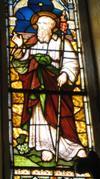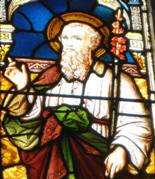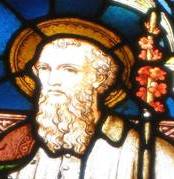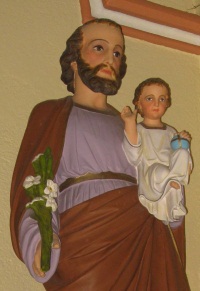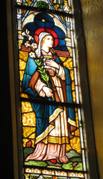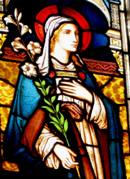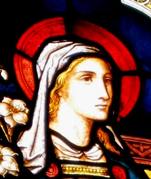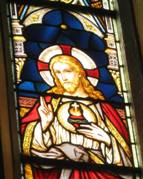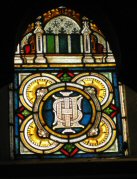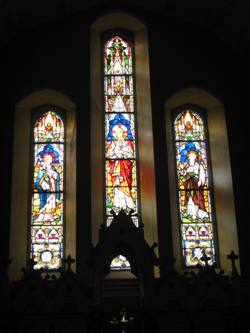Saint Joseph’s window
The Madonna Lily is often associated with Saint Joseph as well as Our Lady as, for example, in his statue inside the church (see the photo on the right). In the images above, however, the flowers are red and are growing from the top of St. Joseph’s staff or rod. The flowering of the staff is described in an apocryphal writing (The Birth of Mary According to James) in which Mary’s future spouse is chosen. Joseph’s staff bursts into lily flowers as a sign that he is the chosen one. The red flower that gardeners call St. Joseph’s Lily is not a lily at all but is a variety of amaryllis or hippeastrum (Hippeastrum x johnsonii) that was hybridised around 1800 A.D. in England.
In Church tradition, Joseph is much older than Mary, and he looks rather elderly in the window images. He doesn’t look so old in the statue image but, then, Mary was barely into her teens when Jesus was born.
The window image on the right shows the monogram SJ which stands for Saint Joseph.

